AITA for putting "ugly" one way mirrors on the windows facing one of my neighbors because I saw the husband looking in my windows?
In the quiet intersection of two homes, a delicate line between privacy and exposure blurs under the gaze of an unwelcome watcher. What once was a sanctuary filled with sunlight and greenery now feels like a stage, where every glance from next door pierces the fragile veil of safety and peace.
The warmth of the day, which should nurture life and comfort, instead casts shadows of discomfort and fear. The struggle to protect one’s own space becomes a silent battle, as the intrusion seeps in through the windows, threatening not just the plants, but the very essence of home.

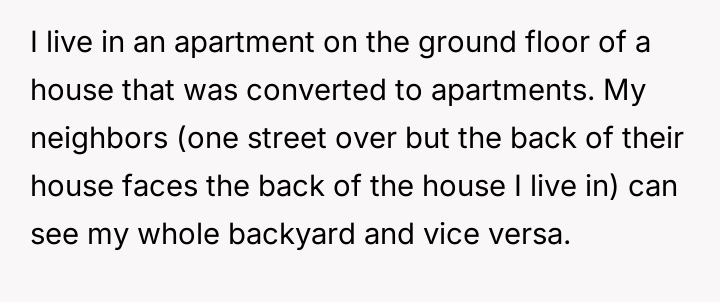

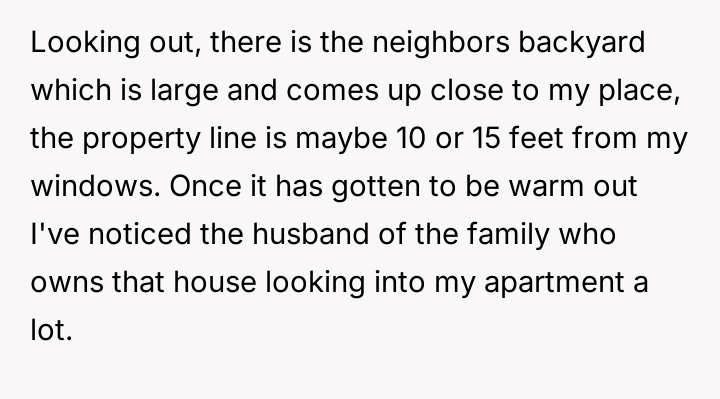
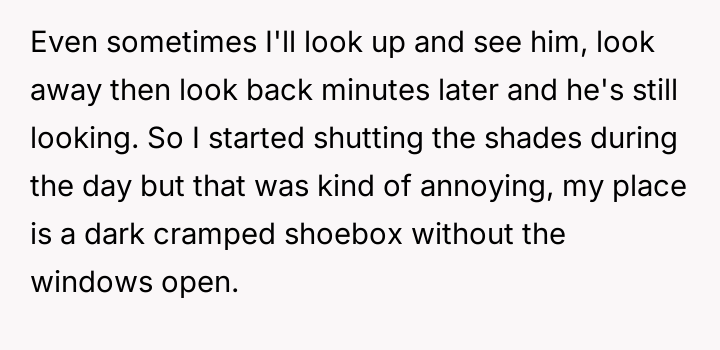

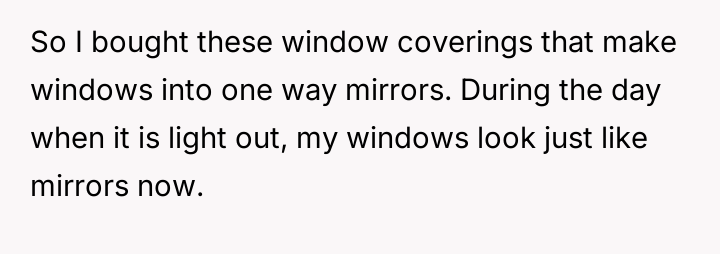
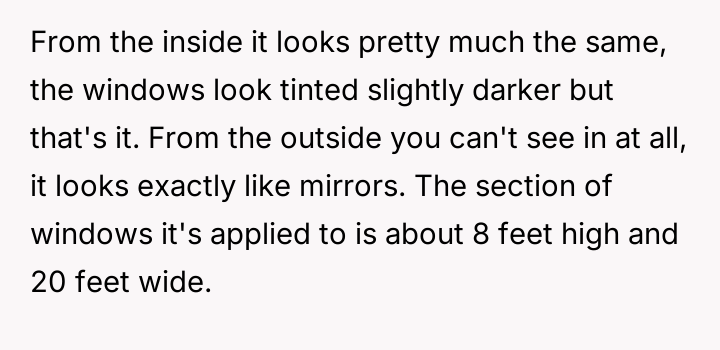
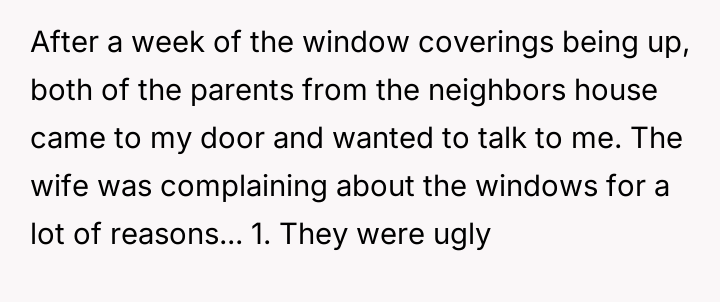
2.

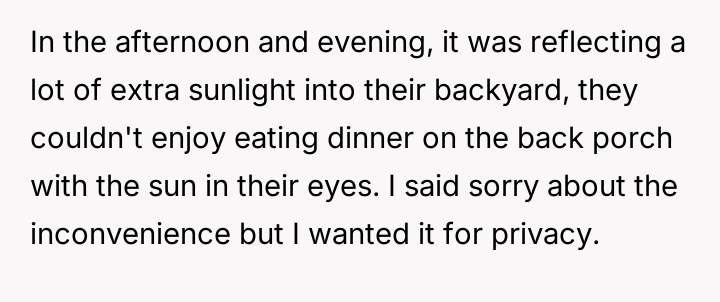

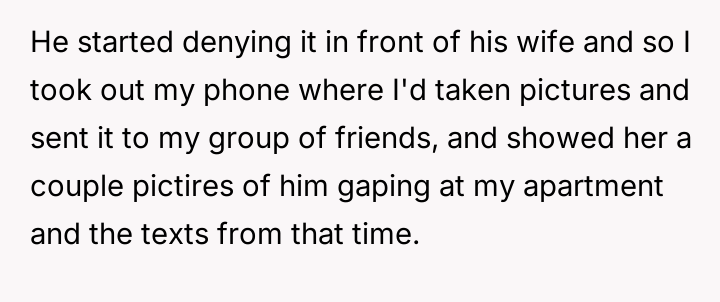



Subscribe to Our Newsletter
As renowned researcher Dr. Brené Brown explains, "."Boundaries are the distance at which I can love you and me simultaneously." The core issue here revolves around the establishment and enforcement of personal boundaries. The OP initially attempted a low-level boundary maintenance by closing the blinds, which was ineffective because it compromised their necessary access to sunlight for their living space and plants. The neighbor's behavior—staring into the apartment repeatedly—constitutes a clear violation of the OP's expectation of privacy in their own home, regardless of whether the neighbor intended malice or not. The OP's escalation to one-way mirrored film was a direct, physical response to an unaddressed social violation. While the neighbors cite aesthetic issues and reflected sunlight as negative impacts, these concerns are secondary to the OP's fundamental right to privacy. The husband's denial upon confrontation, immediately followed by the wife's complaints, suggests a dynamic where the neighbors feel entitled to an unimpeded view or are unwilling to take responsibility for their prior actions. The scale of the film (8x20 feet) is large, but it directly counters the scale of the privacy violation caused by the large bank of windows facing their yard. The OP’s action, while extreme in visual impact, was an appropriate self-defense mechanism for privacy when direct communication failed and the boundary violation persisted. For future situations, a more constructive approach might involve documenting the staring incidents, communicating the necessity of the privacy film clearly with objective evidence (if the landlord is unresponsive), and perhaps negotiating a smaller, less reflective solution if the neighbors offered a genuine compromise rather than complaints after the fact.
REDDIT USERS WERE STUNNED – YOU WON’T BELIEVE SOME OF THESE REACTIONS.:
The community had thoughts — lots of them. From tough love to thoughtful advice, the comment section didn’t disappoint.
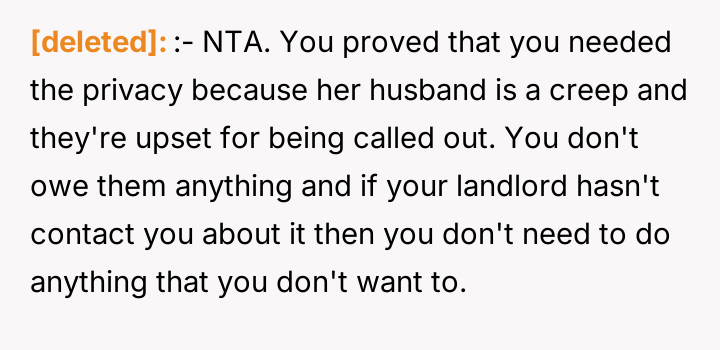
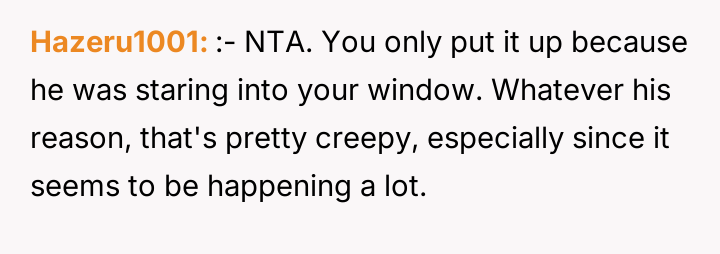
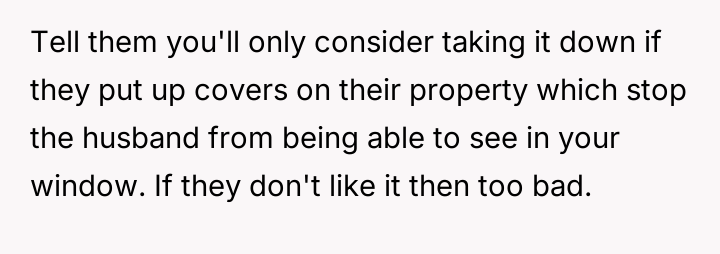

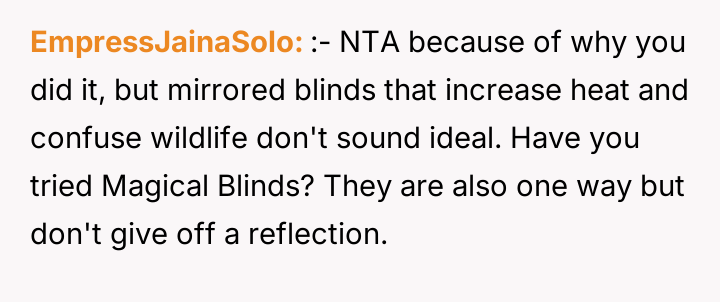

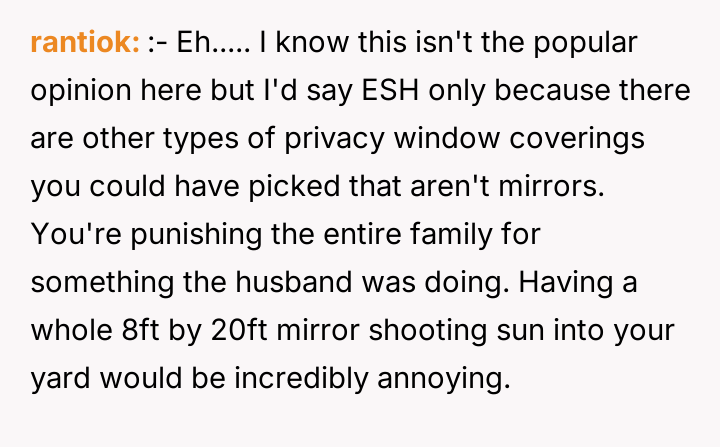


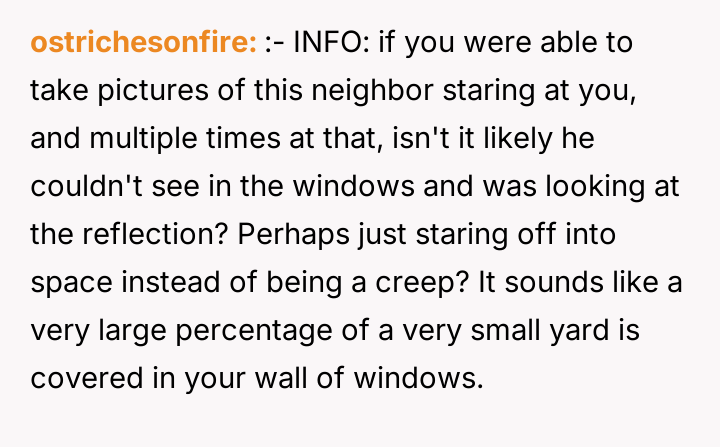
The original poster (OP) experienced repeated, unwanted observation from a neighbor, leading them to install one-way mirrored film for privacy, which successfully blocked the neighbor's view. This action resolved the OP's privacy concern but created a new conflict based on the neighbors' aesthetic preferences and perceived discomfort regarding the reflection.
Was the OP justified in implementing a significant visual alteration to their property to restore their privacy after repeated boundary violations, or did the nature and scale of the solution create an unreasonable imposition on the neighbors' enjoyment of their own property?